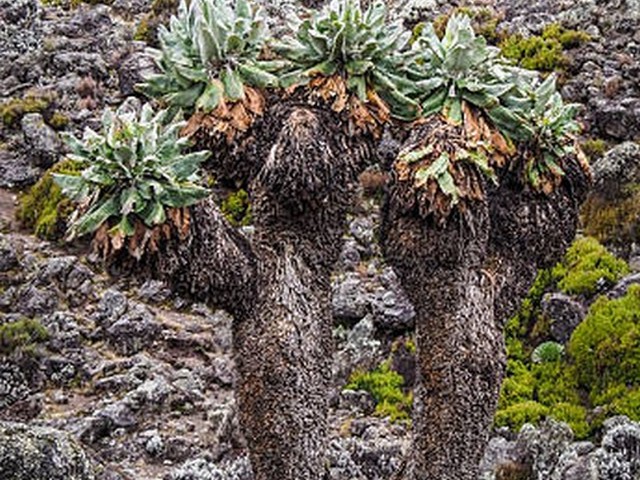Rongai Route Kilimanjaro Trekking for Solo Travellers: A Journey to the Roof of Africa
Introduction: Embrace the Adventure of a Lifetime
Ever pictured yourself standing on the highest point in Africa, surrounded by clouds and a landscape so surreal it feels like walking on the edge of the world? For solo travellers, the path less trodden awaits on the Rongai Route to Uhuru Peak of Mount Kilimanjaro. This blog post, brought to you by Kilimanjaro Centre for Trekking and Ecotourism (KCTE), is your guide to conquering Kilimanjaro through the Rongai Route—an adventure that promises not just a physical journey but a personal transformation.
Why Choose the Rongai Route for Solo Trekking?
Unparalleled Serenity and Scenic Beauty
The Rongai Route is the path of tranquility. It starts on the northern side of Mount Kilimanjaro, far removed from the more crowded routes. With fewer trekkers, the route offers a unique opportunity for solitude and reflection, making it perfect for those who seek a more personal experience.
Gentle Gradient, Gradual Acclimatization
Known for its gentle slopes, the Rongai Route allows for a smoother and more gradual climb, reducing the risk of altitude sickness. This is particularly advantageous for solo travellers, giving you the time to acclimatize and enjoy the journey without the pressure of keeping up with a group.
Rich Wildlife and Unique Flora
Traversing through remote wilderness, the Rongai Route offers a chance to encounter wildlife like the majestic Kilimanjaro Colobus monkeys, and to wander amidst the exotic flora unique to this part of the mountain. Each step connects you closer to nature in its rawest form.
Preparing for Your Solo Trek: Tips and Insights
Training for the Trek
While the Rongai Route is considered less demanding, preparation is key. Focus on cardiovascular fitness, strength training, and endurance exercises. Regular hiking in varied terrain can also acclimatize your body to long walking periods.
Packing Essentials
Packing light yet comprehensive is crucial. Essentials include:
- Layered clothing to adjust to changing temperatures
- A sturdy pair of hiking boots
- A sleeping bag suitable for sub-zero temperatures
- Sunscreen, sunglasses, and a hat for protection against the sun
- A personal first-aid kit
Mental Preparation
Solo trekking tests more than just physical stamina; it’s also a mental challenge. Familiarize yourself with the journey, set personal goals, and prepare to embrace the solitude as a companion.
What to Expect on the Rongai Route: A Day-by-Day Breakdown
Day 1: From Nale Moru to Simba Camp
Begin your ascent from the small village of Nale Moru. The path winds through fields of maize and potatoes before entering pine forestation, where wildlife sightings ignite the thrill of the wild. Rest at Simba Camp for the night, with the vast Kenyan plains stretching out below.
Day 2: Journey to Kikelewa Camp
Trek through moorland where the grandeur of Mawenzi Peak looms ahead. The terrain here is adorned with exotic plants and the calls of mountain birds. Kikelewa Camp awaits at the end of the day, nestled in a valley near a stream.
Day 3: Mawenzi Tarn Camp Under Starlit Skies
Moving closer to Mawenzi, the trek’s midpoint, the landscape shifts dramatically. Spend your night at Mawenzi Tarn Camp, located in a cirque beneath Mawenzi Peak, offering stunning sunset views that paint the sky in hues of fire.
Day 4 and 5: Kibo Hut and the Summit Push
Transitioning from Mawenzi to Kibo Hut, the vegetation thins and the path becomes rockier. Prepare for the midnight trek to the summit. It’s a challenging climb, but witnessing the sunrise from Uhuru Peak—the highest point in Africa—is a reward worth every step.
Day 6: Descent and Reflection
Descend via the Marangu Route, reflecting on the journey. Each step downwards is a step back into the everyday world, but you return not as the same person who started the ascent.
Frequently Asked Questions
Q: Is the Rongai Route suitable for first-time solo trekkers?
A: Absolutely! Its gentle gradient and fewer crowds make it ideal for anyone new to solo trekking, provided adequate preparation is undertaken.
Q: How long does it take to complete the Rongai Route?
A: The trek typically takes 6 to 7 days, allowing for proper acclimatization and enjoyment of the scenery.
Q: What is the best time to trek Kilimanjaro via the Rongai Route?
A: The best times are during the dry seasons, from January to mid-March and from June to October.
Conclusion: Your Call to the Wild Awaits
Are you ready to embark on the journey of a lifetime? At Kilimanjaro Centre for Trekking and Ecotourism (KCTE), we are dedicated to providing you with an unforgettable Kilimanjaro experience via the Rongai Route. It’s more than just a trek; it’s a pilgrimage to the peak of your personal potential. Book your Kilimanjaro climbing adventure with us today and step into the wild, where your spirit can soar free.
Embark on Your Kilimanjaro Journey
Remember, every great adventure begins with a single step. Take yours on the Rongai Route with KCTE, where we make every step count.




